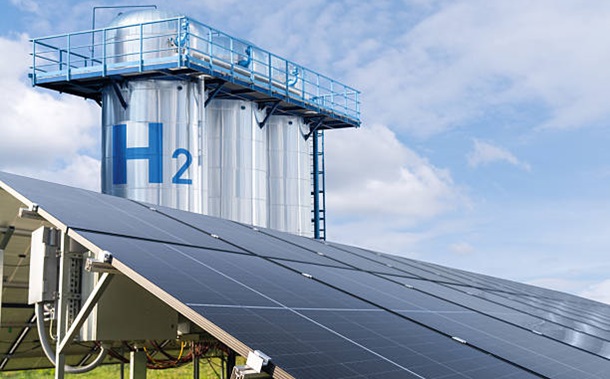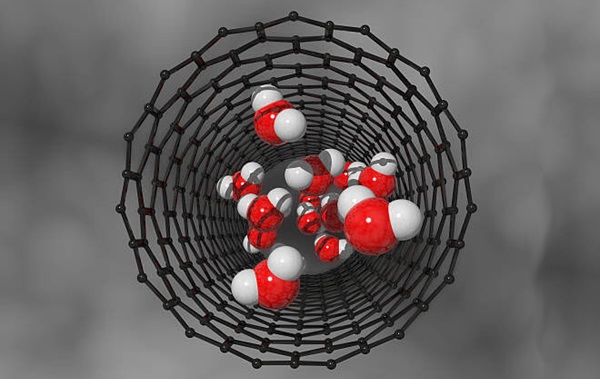GA-Optimized Multivariate CNN-LSTM Model for Predicting Multi-channel Mobility in the COVID-19 Pandemic
Downloads
Full Text:PDF
Downloads
Changruenngam, Suttikiat, Dominique J. Bicout, and Charin Modchang. "How the Individual Human Mobility Spatio-Temporally Shapes the Disease Transmission Dynamics.” Scientific Reports 10, no. 1 (July 9, 2020). doi:10.1038/s41598-020-68230-9.
Gao, Daozhou. "How Does Dispersal Affect the Infection Size?” SIAM Journal on Applied Mathematics 80, no. 5 (January 2020): 2144–2169. doi:10.1137/19m130652x.
Wang, Yi, Zhouchao Wei, and Jinde Cao. "Epidemic Dynamics of Influenza-Like Diseases Spreading in Complex Networks.” Nonlinear Dynamics 101, no. 3 (August 2020): 1801–1820. doi:10.1007/s11071-020-05867-1.
Wong, David W. S., and Yun Li. "Spreading of COVID-19: Density Matters.” Edited by Bing Xue. PLOS ONE 15, no. 12 (December 23, 2020): e0242398. doi:10.1371/journal.pone.0242398.
Ribeiro, Haroldo V., Andre S. Sunahara, Jack Sutton, Matjaž Perc, and Quentin S. Hanley. "City Size and the Spreading of COVID-19 in Brazil.” Edited by Luo-Luo Jiang. PLOS ONE 15, no. 9 (September 23, 2020): e0239699. doi:10.1371/journal.pone.0239699.
Zhang, Jie, Baoheng Feng, Yina Wu, Pengpeng Xu, Ruimin Ke, and Ni Dong. "The Effect of Human Mobility and Control Measures on Traffic Safety during COVID-19 Pandemic.” Edited by Feng Chen. PLOS ONE 16, no. 3 (March 8, 2021): e0243263. doi:10.1371/journal.pone.0243263.
Fakir, Adnan M. S., and Tushar Bharati. "Pandemic Catch-22: The Role of Mobility Restrictions and Institutional Inequalities in Halting the Spread of COVID-19.” Edited by Faisal Abbas. PLOS ONE 16, no. 6 (June 28, 2021): e0253348. doi:10.1371/journal.pone.0253348.
Giles, John R., Elisabeth zu Erbach-Schoenberg, Andrew J. Tatem, Lauren Gardner, Ottar N. Bjí¸rnstad, C. J. E. Metcalf, and Amy Wesolowski. "The Duration of Travel Impacts the Spatial Dynamics of Infectious Diseases.” Proceedings of the National Academy of Sciences 117, no. 36 (August 24, 2020): 22572–22579. doi:10.1073/pnas.1922663117.
Tao, Haiyan, Keli Wang, Li Zhuo, Xuliang Li, Qiuping Li, Yuan Liu, and Yong Xu. "A Comprehensive Framework for Studying Diffusion Patterns of Imported Dengue with Individual-Based Movement Data.” International Journal of Geographical Information Science 34, no. 3 (November 18, 2019): 604–624. doi:10.1080/13658816.2019.1684497.
Liu, Kun, Siqi Ai, Shuxuan Song, Guanghu Zhu, Fei Tian, Huan Li, Yuan Gao, et al. "Population Movement, City Closure in Wuhan, and Geographical Expansion of the COVID-19 Infection in China in January 2020.” Clinical Infectious Diseases 71, no. 16 (April 17, 2020): 2045–2051. doi:10.1093/cid/ciaa422.
Lai, Shengjie, Nick W. Ruktanonchai, Liangcai Zhou, Olivia Prosper, Wei Luo, Jessica R. Floyd, Amy Wesolowski, et al. "Effect of Non-Pharmaceutical Interventions to Contain COVID-19 in China.” Nature 585, no. 7825 (May 4, 2020): 410–413. doi:10.1038/s41586-020-2293-x.
Chang, Meng-Chun, Rebecca Kahn, Yu-An Li, Cheng-Sheng Lee, Caroline O. Buckee, and Hsiao-Han Chang. "Variation in Human Mobility and Its Impact on the Risk of Future COVID-19 Outbreaks in Taiwan.” BMC Public Health 21, no. 1 (January 27, 2021). doi:10.1186/s12889-021-10260-7.
Sainath, Tara N., Brian Kingsbury, Abdel-rahman Mohamed, George E. Dahl, George Saon, Hagen Soltau, Tomas Beran, Aleksandr Y. Aravkin, and Bhuvana Ramabhadran. "Improvements to Deep Convolutional Neural Networks for LVCSR.” 2013 IEEE Workshop on Automatic Speech Recognition and Understanding (December 2013): 8614-8618. doi:10.1109/asru.2013.6707749.
Ciresan, D., U. Meier, and J. Schmidhuber. "Multi-Column Deep Neural Networks for Image Classification.” 2012 IEEE Conference on Computer Vision and Pattern Recognition (June 2012): 3642-3649. doi:10.1109/cvpr.2012.6248110.
Brocardo, Marcelo Luiz, Issa Traore, Isaac Woungang, and Mohammad S. Obaidat. "Authorship Verification Using Deep Belief Network Systems.” International Journal of Communication Systems 30, no. 12 (January 18, 2017): e3259. doi:10.1002/dac.3259.
Silver, David, Aja Huang, Chris J. Maddison, Arthur Guez, Laurent Sifre, George van den Driessche, Julian Schrittwieser, et al. "Mastering the Game of Go with Deep Neural Networks and Tree Search.” Nature 529, no. 7587 (January 27, 2016): 484–489. doi:10.1038/nature16961.
Socher, Richard, John Bauer, Christopher D. Manning, and Andrew Y. Ng. "Parsing with compositional vector grammars." In Proceedings of the 51st Annual Meeting of the Association for Computational Linguistics (Volume 1: Long Papers), (2013): 455-465.
Chong, Eunsuk, Chulwoo Han, and Frank C. Park. "Deep Learning Networks for Stock Market Analysis and Prediction: Methodology, Data Representations, and Case Studies.” Expert Systems with Applications 83 (October 2017): 187–205. doi:10.1016/j.eswa.2017.04.030.
Shih, Shun-Yao, Fan-Keng Sun, and Hung-yi Lee. "Temporal Pattern Attention for Multivariate Time Series Forecasting.” Machine Learning 108, no. 8–9 (June 11, 2019): 1421–1441. doi:10.1007/s10994-019-05815-0.
Hoseinzade, Ehsan, and Saman Haratizadeh. "CNNpred: CNN-Based Stock Market Prediction Using a Diverse Set of Variables.” Expert Systems with Applications 129 (September 2019): 273–285. doi:10.1016/j.eswa.2019.03.029.
Hochreiter, Sepp, and Jürgen Schmidhuber. "Long Short-Term Memory.” Neural Computation 9, no. 8 (November 1, 1997): 1735–1780. doi:10.1162/neco.1997.9.8.1735.
Yadav, Anita, C K Jha, and Aditi Sharan. "Optimizing LSTM for Time Series Prediction in Indian Stock Market.” Procedia Computer Science 167 (2020): 2091–2100. doi:10.1016/j.procs.2020.03.257.
Yuan, Xiaofeng, Lin Li, and Yalin Wang. "Nonlinear Dynamic Soft Sensor Modeling With Supervised Long Short-Term Memory Network.” IEEE Transactions on Industrial Informatics 16, no. 5 (May 2020): 3168–3176. doi:10.1109/tii.2019.2902129.
Nabipour, M., P. Nayyeri, H. Jabani, A. Mosavi, E. Salwana, and Shahab S. "Deep Learning for Stock Market Prediction.” Entropy 22, no. 8 (July 30, 2020): 840. doi:10.3390/e22080840.
Kamalov, Firuz. "Forecasting Significant Stock Price Changes Using Neural Networks.” Neural Computing and Applications 32, no. 23 (May 4, 2020): 17655–17667. doi:10.1007/s00521-020-04942-3.
Liu, Hui, and Zhihao Long. "An Improved Deep Learning Model for Predicting Stock Market Price Time Series.” Digital Signal Processing 102 (July 2020): 102741. doi:10.1016/j.dsp.2020.102741.
Marblestone, Adam H., Greg Wayne, and Konrad P. Kording. "Toward an Integration of Deep Learning and Neuroscience.” Frontiers in Computational Neuroscience 10 (September 14, 2016). doi:10.3389/fncom.2016.00094.
Zhong, Xiao, and David Enke. "Predicting the Daily Return Direction of the Stock Market Using Hybrid Machine Learning Algorithms.” Financial Innovation 5, no. 1 (June 15, 2019). doi:10.1186/s40854-019-0138-0.
Lu, Wenjie, Jiazheng Li, Yifan Li, Aijun Sun, and Jingyang Wang. "A CNN-LSTM-Based Model to Forecast Stock Prices.” Edited by Abd E. I.-Baset Hassanien. Complexity 2020 (November 23, 2020): 1–10. doi:10.1155/2020/6622927.
Mahmoud, Amal, and Ammar Mohammed. "A Survey on Deep Learning for Time-Series Forecasting.” Machine Learning and Big Data Analytics Paradigms: Analysis, Applications and Challenges (December 15, 2020): 365–392. doi:10.1007/978-3-030-59338-4_19.
Mónica, Julio C., Patricia Melin, and Daniela Sánchez. "Genetic Optimization of Ensemble Neural Network Architectures for Prediction of COVID-19 Confirmed and Death Cases.” Studies in Computational Intelligence (2021): 85–98. doi:10.1007/978-3-030-68776-2_5.
Liu, Zhuoyi, Ryoichi Hara, and Hiroyuki Kita. "Hybrid Forecasting System Based on Data Area Division and Deep Learning Neural Network for Short-Term Wind Speed Forecasting.” Energy Conversion and Management 238 (June 2021): 114136. doi:10.1016/j.enconman.2021.114136.
Vadicharla, Giridhar, and Pushpa Sharma. "An Approach of Optimization Techniques for History Matching and Production Forecasting.” New Ideas Concerning Science and Technology Vol. 12 (May 1, 2021): 123–140. doi:10.9734/bpi/nicst/v12/7815d.
Zhang, Zhenwu, and Xiantao Liu. "Study on Optimal Operation of Natural Gas Pipeline Network Based on Improved Genetic Algorithm.” Advances in Mechanical Engineering 9, no. 8 (August 2017): 168781401771598. doi:10.1177/1687814017715981.
Katoch, Sourabh, Sumit Singh Chauhan, and Vijay Kumar. "A Review on Genetic Algorithm: Past, Present, and Future.” Multimedia Tools and Applications 80, no. 5 (October 31, 2020): 8091–8126. doi:10.1007/s11042-020-10139-6.
Qu, Zhijian, Hanxin Liu, Zixiao Wang, Juan Xu, Pei Zhang, and Han Zeng. "A Combined Genetic Optimization with AdaBoost Ensemble Model for Anomaly Detection in Buildings Electricity Consumption.” Energy and Buildings 248 (October 2021): 111193. doi:10.1016/j.enbuild.2021.111193.
Doewes, Rumi Iqbal, Rajit Nair, and Tripti Sharma. "Diagnosis of COVID-19 through Blood Sample Using Ensemble Genetic Algorithms and Machine Learning Classifier.” World Journal of Engineering ahead-of-print, no. ahead-of-print (July 1, 2021). doi:10.1108/wje-03-2021-0174.
Gao, Yiping, Liang Gao, Xinyu Li, and Cuiyu Wang. "A Genetic Algorithm-Based Ensemble Convolutional Neural Networks for Defect Recognition with Small-Scale Samples.” Advances in Swarm Intelligence (2021): 390–398. doi:10.1007/978-3-030-78743-1_35.
Leung, Kathy, Joseph T. Wu, and Gabriel M. Leung. "Real-Time Tracking and Prediction of COVID-19 Infection Using Digital Proxies of Population Mobility and Mixing.” Nature Communications 12, no. 1 (March 8, 2021). doi:10.1038/s41467-021-21776-2.
Kuo, Cheng-Pin, and Joshua S. Fu. "Evaluating the Impact of Mobility on COVID-19 Pandemic with Machine Learning Hybrid Predictions.” Science of The Total Environment 758 (March 2021): 144151. doi:10.1016/j.scitotenv.2020.144151.
- This work (including HTML and PDF Files) is licensed under a Creative Commons Attribution 4.0 International License.




















